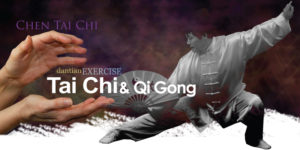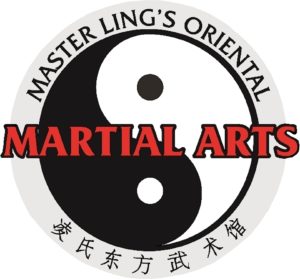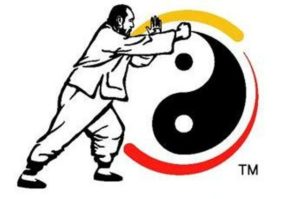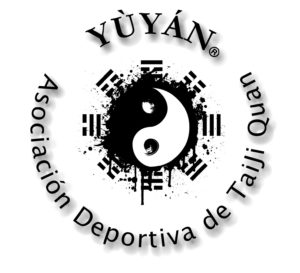Slanted FlyingJournal of Tai Chi Chuan
Training
School Traditions/Principles (Daotong 道統)

Another obvious example is that, while we practice our solo forms slowly (although some traditions, like Chen style, Yang style fast set, weapons forms, etc. will contain fast movements), we know it would be useless fighting an opponent at that slow speed. Training is often different from application, and it is important to know the purpose behind practicing slowly, and when it is appropriate to break that training principle.
Tempo differences in various traditions do not make one correct and another one wrong. Differences in weight distribution, different traditions using from 100/0 through even 50/50 during forms practice, do not mean that other variations are necessarily wrong.
There are numerous other examples of differences between various styles or schools. Rather than one way being correct and other approaches wrong, I consider stylistic differences and differences in emphasis to be variations on a spectrum of possibilities. As long as they all follow Taijiquan principles, they can all be correct.
But how can we know when we are following Taijiquan principles? Well, until you are a master, you may need to rely on those with greater understanding to guide you.
There are several ways that individuals can gain greater understanding on their own. One can study differing styles, or with a variety of schools in one style, and try to understand their commonalities, therefore indicating where differences are likely to be style or school specific, or for training purposes only, rather than general Taijiquan rules.
Another possibility is to practice in different contexts, and with people from different traditions, styles and/or arts. If your skill level is satisfactory, and rules only work against classmates and not outsiders, then it is likely that those “rules” are not general Taijiquan principles. If one is able to generalize from known situations (forms, structured drills, etc.) to other situations (free play, working with weapons, etc.), then it is likely that the understanding applies more broadly.
In the weapon work that I have learned, there are several differences with weaponless practice, even within the same style of Taijiquan. These differences include ways of stepping, pivoting, length of stance and the degree of weight shift in the forward bow stance, positioning of the arms or hands in relation to the body, height variations, etc. All of these differences point to “rules” that can be broken in different contexts.
Another way to test your understanding is to see if your interpretation of Taijiquan principles can improve someone’s abilities in unrelated sports. For example, can an understanding of Taijiquan improve a volleyball player’s platform, improving their receiving/passing abilities?
In one online training drill the coach emphasizes “calm” and “shoulder down”. I have not been coached in volleyball, but I can recognize those principles from Taijiquan.
But what else may we speculate about? In the accompanying photograph there are numerous things to like, even though the body is held differently than we would for combat and would likely be wrong in the context of fighting.
The shoulders remain down, centered and comfortable rather than rising up. There is a nice smooth curve of the upper back connecting the energy of the spine out into the arms (the shoulder blades stay flat rather than winging out). The lower back (mingmen, 命門, life gate) remains open, rather than having a swayback, allowing comfortable projection/connection of energy up the spine from the hips to the shoulders.
Even though he squats lower in order to reach the ball than we typically would in Taijiquan (i.e., the knees are bent greater than 90°), he appears to keep his hips level and the pelvis tucked. This likely maintains energy in the centers of the hips and may maintain his ability to rotate the hips.
Though relatively minor, the negatives that I think that I can detect are as follows.
He allows his knees to collapse inward slightly (notice how the heels of the feet look like they roll inward, the outer heels off of the ground) rather than keeping them aligned with the direction of his big toes. While this may slightly compromise the power generation/connection from the floor through his legs, for volleyball it would probably only cause a slight reduction of control against the force being received from the ball.
If I were coaching him, this would be the first thing that I would suggest adjusting. Not only could it slightly improve his connection from the floor to the ball and therefore slightly improve his ball control, it should also reduce the stresses in his ankles and knees, reducing his chance of injury, especially as he ages.
After adjusting his knees, I would make numerous adjustments to his neck, head and face. There is so much here that it leads me to suspect that issues with the head, other than keeping the eyes on the ball, are not addressed in volleyball. But we know from martial arts practice that the position and energy of the head can affect the stability of entire body. I will only briefly address some issues here since this analysis is intended only as an example.
I would have him lengthen the back of the neck so that the energy continues projecting to the crown of the head. The back of the neck and head should have yang (expanding, lifting) energy whereas the face, chin and throat should have yin (soft, receiving, settling) energy. In the photo his face is very yang and the skull looks like it compresses the back of the neck down towards his shoulders.
In the photo his arms are within the frame of his shoulders, so they would both be yin (receiving), but if he had to reach to his side for balls that he did not have time to move in front of, then the arm that reaches across his body would still be yin, but the arm positioned outside of his shoulder would be yang. How he manages the cycle of energy through his arms could affect the control of the ball.
Understanding the cycle of yin and yang in the arms could lead to softer and more controlled bumping of the ball. This may also be something not commonly addressed in volleyball.
Of course, volleyball is not a martial art. But training principles (“rules”) may also differ from applications, and it is important for Taijiquan practitioners to recognize the differences.














Slanted Flying was apparently unable to get permission to reproduce the photo of the volleyball player that was analyzed in this article. For those who are interested, the picture titled “Volleyball Serve Receive Low Position” can be seen at the following site (VollyballAdvisors.com):
http://www.volleyballadvisors.com/volleyball-passing-techniques.html